England’s Only Travel Guide You Need For A Great Trip in 11 Easy Steps
- Destinations Europe
Cruisit Team
- August 19, 2022
- 0
- 4877
- 81 minutes read
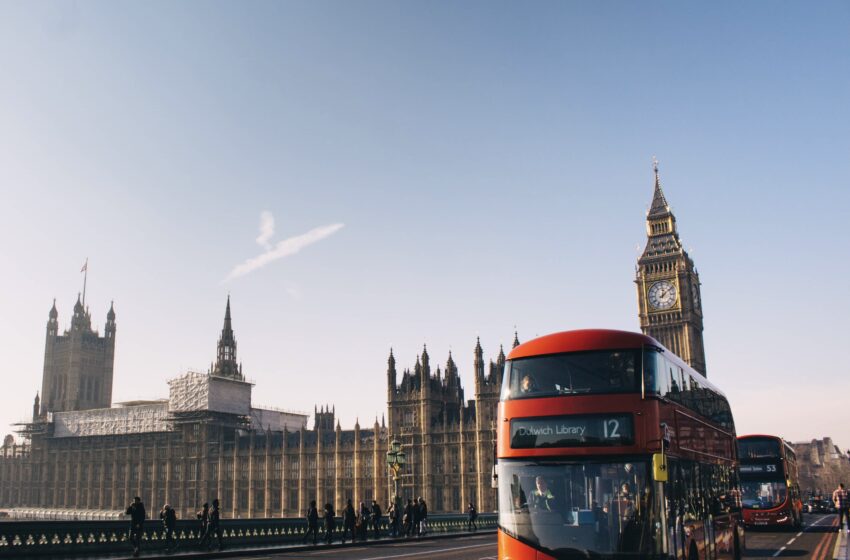
England’s Background
The earliest records of human existence in England date back to 4,500 BC during the Stone Age, with Stonehenge being the most renowned example, having been finished by 2,000 BC during the New Stone Age. The Celts, talented artisans, ushered in the Bronze Age, introducing swords and fortifications around 650 BC. The Romans began operations under Julius Caesar in 55 BC, but Claudius began conquering England in 43 AD. When the Roman Empire began to fall apart, it provided an opportunity for warring tribes and kingdoms such as the Scots, Picts, Saxons, and Germanic tribes such as the Angles to vie over the Empire’s ruins. Kingdoms either lost power or merged until eventually unified by Alfred the Great, who overcame the advancing Vikings and Danes and controlled a united England, which Alfred’s descendants thereafter ruled. However, additional clashes with the Danes and Scots were on the horizon. Later, in 1016, Canute of the Danes reigned over England, and the country was affluent, stable, and well-governed during his leadership. Invaders, rebellions, civil wars, and starvation were all close, but so was Henry III’s creation of Oxford and the deportation of Jews. From the 13th through the 17th centuries, England saw civil wars, instability, deception, foreign conflicts, and internal warfare, most notably between the Scots and the Yorkists, but the Black Death also decimated the country, murdering one-third of its population.
Exploration of the new world was part of the period, beginning with Mary, the first Queen of England, coinciding with the Spaniards’ voyage, which resulted in a battle between them. Then there were George I and George II, who left most of the governance in the hands of their ministers. Quebec was gained in the Seven Year War with France, preserving its status as a British colony alongside India. During George III’s tenure, Britain lost all of its North American colonies, with the Americans scoring a decisive victory at Yorktown, assuring their independence. The industrial revolution altered everyday life in Britain in the late 18th century. Towns, manufacturing, and trade had been flourishing for generations, but economic expansion took off about 1780. Then came Queen Victoria, who oversaw several changes while still facing political and social obstacles. Her most significant change was the repeal of the death sentence for a variety of offences, including being hung for theft. During her tenure, she witnessed government reform, voting rights, free commerce, and the introduction of weekends, as well as congested housing and unhygienic circumstances that resulted in cholera. Then came King Edward VII and King George V, who instituted even more changes. A succession of economic booms and busts followed, as did two World Wars, which usher in a period of food and housing scarcity. Queen Elizabeth II took power in 1952, and Britain became a prosperous society throughout her reign. The growth of consumer goods provided ordinary people with a lot of money and luxury, but the crown also lost strategic influence over nations such as Egypt. The 1960s and early 1970s, on the other hand, experienced low unemployment and prosperity. However, another recession in the 1970s, early 1980s, and even the 1990s reduced the country to its knees. The Empire was demolished, and the country was rebuilt as a modern and successful nation.
England once ruled the waves, and the sun never set on its Empire in the height of its glory. In those days, the British virtually ruled the world, enforcing a pax-Britannica on the world at large. But superpowers come and go, and the English, like the Romans before them, ultimately lost their Dominion, but not their luster and appeal. Although the United Kingdom has lost its standing, it has not lost all of its past splendor. In reality, there are few places in the country where evidence of this previous greatness can be found. Relics of an industrial past dot the landscape, huge stately residences demonstrate the profits made both at home and abroad, and monuments and sculptures recall an age when countries were tamed and adversaries were crushed. Combine that with a population that reflects the previous Empire’s breadth and depth, and you get a picture of what the British Empire once was. Multiple nationalities have come to Britain because of the historical links the nation had with its former colonies, from the Indian subcontinent to the Caribbean, and from Africa to Australia and New Zealand.
With a history that dates back more than 6000 years, England is a country where the past is always present. Ruined castles stand alone on lonely hilltops. In the corners of forsaken pastures, mysterious menhirs (prehistoric standing stones), barrow burials, and stone circles stand. Medieval cathedrals, imperial palaces, and extravagant stately residences appear with startling frequency. And each English city, town, and hamlet has its own unique story to tell: a huge, historical epic of monarchs and commoners, industrialists and innovators, eccentrics, dreamers, and rebels as intriguing – and startling – as anything Shakespeare, Dickens, or JK Rowling could conjure up.
Cities in England are lively and interesting, with extensive and varied histories of development, historic structures, and spectacular modern architecture. Whether it’s multicultural London or up-and-coming Glasgow, each has something unique to offer. England is quirky, thrilling, and eternally interesting. It is a green and lovely place, a sovereign isle, a vessel of an empire, and a pioneer of parliamentary democracy.
“Once a thriving Empire, is still an intriguing nation, with so much history to uncover in its ruins and structures, but also an appealing contrast of a laid back cobblestoned countryside and modern fast paced cities“
England’s cities are major attractions, from York’s cobbled alleys to Oxford’s dreaming spires, from Bristol’s Floating Harbour to the Liverpool Docks. Of course, London is the trump card: a trendsetter, history-maker, and game changer for over a thousand years, spanning everything from royal mansions to world-class museums, iconic theaters, and large urban parks. Outside of London, there is a diverse urban landscape to explore, such as diving into Manchester’s throbbing music scene, visiting Newcastle’s creative art galleries, admiring Bath’s sparkling Georgian grandeur, or bargain-hunting through Brighton’s eccentric retail districts. Whichever route you take, you can expect lots of urban experiences.
England may seem small, but it packs a lot of natural beauty into its little footprint: verdant fields and raggedy hills, limestone cliffs and windy meadows, old woodlands and brooding moorland. There are ten national parks, 34 Areas of Outstanding National Beauty, and miles of rugged, beach-fringed coastline – 2795 miles in all, making England’s coast one of Europe’s longest and the only one with a public coast walk that runs the whole length. Whether you’re hiking the South Downs, climbing the fells of the Lake District, or meandering above Dover’s legendary White Cliffs, England is a visual feast.
Despite its reputation for rain and gloomy weather, England has a moderate climate with gentle winters and lovely summers. The British countryside has a mix of the charming and the untidy, and it offers a variety of outdoor activities. The United Kingdom as a whole provides a broad selection of landscapes for the adventurous to explore, from the rocky Scottish highlands to sunny Cornwall, and from the cliffs of Dover to the Giant’s Causeway in Northern Ireland. But it goes without saying that England alone offers so much to see.
To enjoy England the most, you will want to stay on the move in order to see and do as much as you can of what England has to offer for tourists. In this Cruisit England travel guide, we give you a plan that falls halfway in the middle, with a good mix of leisure and discovery. Enter the country and fully experience and explore this European dream destination. England’s trip plan that we provide below is best experienced in the country’s high season, but you can also enjoy the shoulder season as much. Your European fantasies will come true, with warm days beside cobblestone countryside in the company of legend, and surrounded by lush forests and dramatic high-peaked mountains, not to mention hundreds of wildlife species to discover.
Also, in our travel guide to England, we will provide you with all the information you will need to navigate the country at ease. England’s highlights, tips, transportation, top places and attractions, a handcrafted itinerary in England, and more will be provided for you as you read through. If you are excited enough by now, let us dig right in!
- Spend time exploring London, which has museums, monuments, memorials, government buildings, palaces, and a diverse population.
- Hike around the Lake District’s magnificent hills and lakes, feeding the swans and ducks.
- Climb Mt. Snowdon in Snowdonia National Park Punt around Cambridge or Oxford, taking in the intellectual atmospheres of those cities
- Go to the mystical Stonehenge in the Wiltshire countryside
- Travel to Cornwall and the Cornish Coast for some surf and sun.
- Explore the Northern Irish coastline from Belfast to The Giant’s Causeway.
- Walk the length of Hadrian’s Wall, thinking on the destiny of another destroyed Empire.
- In Liverpool, say hello to the Beatles.
- Explore West Yorkshire like the Bronts.
- Bath’s famed thermal waters are ideal for soaking.
- Travel through time in York’s historical district.
- Stroll around London’s South Bank.
- The British drive on the left, which is incredibly challenging while crossing a street since you tend to glance in the incorrect direction for oncoming traffic.
- Be advised that English in the United Kingdom might be difficult to comprehend for visitors from other English-speaking nations. There are as many accents and dialects in the cosmos as there are stars.
- While the British are legally part of the metric system, they still use the Imperial system in most circumstances, with length and height measured in inches, feet, yards, and miles, and weight measured in ounces, pounds, and stones.
- Many British museums are free; take advantage of this chance!
- If you use public transportation in London, the Oyster card will save you money.
- Don’t refer to a Scot, an Irishman, or a Welshman as English. England is currently a part of the United Kingdom, and it includes Scotland, Wales, and Northern Ireland, a self-governing province with its own population.
- Expect to be served tea on any occasion, or even without one. Tea is ingrained in the culture.
- People outside of London are really more warm and pleasant than the capital’s somewhat frigid exterior.
- It is critical to become acquainted with the London underground (subway or metro). However, when traveling to the airport, be cautious of some stations. Some lines may be confusing, so it’s always a good idea to inquire if you think the next station isn’t the one you’re supposed to be on.
- You can walk practically the whole length of London, as well as all of the other cities and towns. It will be slower, and some locations will necessitate the use of a cab, bus, or subway. However, practically all center sites are easily accessible by foot, and there is no better way to experience a nation than by foot.
Crime & Scams in England
In comparison to the rest of the world, England is comparatively safe, particularly among developed countries. That doesn’t mean you shouldn’t be cautious. The overall crime rate in England is low. Petty crime, however, such as pickpocketing, car theft, and street robberies, does occur. Your trip should be trouble-free as long as you apply common sense and don’t take chances you wouldn’t get in trouble.
Brixton, Harlesden, Peckham, Seven Sisters, Finsbury Park, Stockwell, Willesden Junction, lime house, Canningtown, Elephant & Castle, Croydon, Newham, Tower Hamlets, Southwark, Hackney, Ealing, Lambeth, and Westminster are all places to avoid in London. Durham, Northumbria, Kent, Humberside, South Yorkshire, Merseyside, West Midlands, Greater Manchester, West Yorkshire, and Cleveland are other locations to avoid or be cautious around in England.
Be vigilant, particularly if you are in public places used by foreigners, near official buildings, crowded attractions, or on public transportation. Avoid poor areas of the city. Take care on city streets, especially after dark or if you are on your own. Don’t carry large amounts of money or wear valuable watches or jewelry. Avoid using your mobile phone in the street.
Healthcare in England While Traveling
England, a component of the United Kingdom, boasts some of the greatest healthcare in the world. The National Health Service (NHS) provides free public healthcare to all residents and citizens across the United Kingdom. This, of course, does not apply to tourists visiting England, which means you may have to pay for NHS treatment.
Before every trip, make sure you are up to date on all routine vaccinations. Among the key recommended vaccines globally are chickenpox (Varicella), diphtheria-tetanus-pertussis (DTP), influenza (flu), measles-mumps-rubella (MMR), polio, hepatitis, typhoid, and shingles. If you will be in contact with wildlife, you may want to consider getting a rabies vaccination.
When visiting England, you are not legally required to purchase travel medical insurance. However, it is always important to have comprehensive medical coverage when traveling because you never know what you could encounter while overseas, especially in an expensive European country. You should make sure you have adequate travel health insurance and accessible funds to cover the cost of any medical treatment, evacuation, and repatriation.
Only eat foods that are cooked and served hot, avoid food that has been sitting on a buffet, and eat raw fruits and vegetables only if you have washed them in clean water or peeled them.
Only drink beverages from factory-sealed containers, avoid ice because it may have been made from unclean water, and only drink pasteurized milk.
Make sure to wash your hands often with soap and water for at least 20 seconds, especially after using the bathroom and before eating. If soap and water aren’t available, use an alcohol-based hand sanitizer that contains at least 60% alcohol. Also, keep your hands away from your face and mouth.
If you’re wondering what the ideal season to visit England is, spring from late March to early June, and fall from September to November, when it’s typically mild and dry. You’ll witness magnificent spring flowers or fall foliage changing colors while avoiding the considerably crowded summer season.
England, as a major part of the United Kingdom, has a temperate climate, which means that the country has mild, rainy winters and warm, wet summers. It seldom experiences the extremes of heat or cold, drought or wind that other regions do.
Shoulder Season
May to early June and September to October is the shoulder season and is a much under-appreciated time to visit England. This is the next best season to visit the UK where it is also less crowded. May and June can be lovely anywhere in Britain. Prices during these times are a bit lower than the peak season in the country. Temperatures are still comfortable and can get a bit cool with highs at around 19°C and lows of 12°C. However, it could rain, and sometimes gets gloomy as well.
High (Peak) Season
From mid-June until August is peak season in England. This also corresponds with national school holidays. Summer is the hottest season, and it is by far the finest time to visit London. During these months, the city also holds several events, and you can experience the vivid energy of the city. From mid-June through August, England and the United Kingdom are in high season, with exceptionally long days, the nicest weather, and the busiest days for tourist pleasure. During the peak season in England, the skies are clearest over the country and the rest of the United Kingdom. Temperatures in the daytime can reach 23°C, and possibly higher, and lows are around 16°C and sometimes lower. This is the most expensive period in England and across the United Kingdom. Booking in advance is highly suggested as availabilities of accommodation and transportation can run thin.
Off-Season (Low Season)
From November to April is generally considered to be the low season for travel to England and the United Kingdom. Note that some parts of England such as London experience significant numbers of tourists during December and early January, Christmas and New Years’ season, can significantly impact costs. However, the rest of the months are rather slow, with the least visitors flocking to the country, making it a perfect match for backpackers and those on a budget to visit the country and snag great deals on accommodation and flights, since it reaches it lowest point during the off season. The temperatures however, has highs at around 9°C and lows that can dip below 1°C. Gloomy weather and rain are part of the low season in England.
To enter England, you must have a passport and either a UK visa or a visa free entry for European, US, or Australian passport holders. Check if your passport is eligible for visa free entry before you book your tickets.
By Plane
Flying to the UK from anywhere in the globe is simple, with London Heathrow being Europe’s largest airport and well linked to downtown London. Other major international airports in the United Kingdom include Gatwick, Stansted, City, and Luton in London, Manchester and Newcastle in the north, and Birmingham in the west.
Heathrow has five terminals, and many other airports have more than one, so verify which terminal your flight arrives or departs from before you fly. The various Heathrow and Gatwick terminals are linked by free shuttle services. National Express buses take roughly 75 minutes to transfer between Heathrow and Gatwick. Buses from Heathrow to Stansted or Luton airports can take up to 90 minutes, so keep this in mind when booking flight connections.
By Train
The Channel Tunnel connects the European continent to the United Kingdom via Eurostar trains (which carry passengers) and Eurotunnel trains (which take passengers in their cars). The price is equivalent to flying, and the train may be more convenient and environmentally friendly. A one-way ticket from London to Paris may cost as low as £29; rates vary according on the day and time of travel, as well as how far in advance you buy.
Passengers in coaches/buses and in vehicles board a Eurotunnel freight train that travels 35 minutes from Calais, France, to the port of Folkestone, England.
Eurostar passenger train services conduct regular direct services from Brussels in Belgium, Paris, Lille, and Calais in France, to Ashford and Ebbsfleet in southeast England, and St Pancras station in London.
By Car
The Channel Tunnel is by far the shortest method to drive over the English Channel. However, no vehicle may be driven via the Channel Tunnel. Instead, automobiles must board the Eurotunnel Le Shuttle train, which departs from stations at each end of the route. The travel takes about 35 minutes and costs roughly £50 each vehicle.
By Bus
Traveling into the UK by bus is a less expensive alternative. Many carriers provide regular trips from the European mainland over the Channel. You might end your tour in London or another large city in the United Kingdom.
International coach services arrive at London’s Victoria coach terminal as well. These are frequently less expensive than plane or train tickets, and direct lines stretch as far as Bucharest, Romania. Just don’t forget to carry your passport!
By Boat
A network of automobile and passenger ferry services connects many ports in the United Kingdom with northern and southern Europe.
International ferry ports in the United Kingdom include Felixstowe, Harwich, Folkestone, Dover, Southampton, and Bristol in the south; Hull and Liverpool in the north; Edinburgh in Scotland, and Belfast in Northern Ireland.
Ferries may be easy, inexpensive, and enjoyable. Fares vary widely depending on the season, time of visit, and length of stay, so do your homework before booking.
Crossing times range from little over an hour on the shortest routes to more than 24 hours on services from Spain and Scandinavia. If you’re going on an overnight cruise, it could be worth it to spend a little extra for sleeping rooms. DFDS operates a quick Seacat (catamaran) service from Boulogne, France, that takes little under an hour. Catamarans can transport automobiles and, since they lack the dip and swing of a traditional ship, they may be better for people who get seasick.
By Plane
Domestic air travel isn’t necessary due to the short distances inside the UK, but it is a nice choice if you want to save time and sometimes even money for longer excursions such as between London and Scotland, or to get to one of the many lovely outlying islands throughout the nation. British Airways, easyJet, Ryanair, FlyBE, and Aer Lingus are among the internal flight operators.
By Train
When it comes to rail travel, the United Kingdom has a long and distinguished history. This is evident in the country’s magnificent train stations, which include London St Pancras International, Bristol Temple Meads, and Huddersfield. Trains in the United Kingdom are generally clean, simple to use, and relatively efficient. The UK train network is divided into several franchises, each with its own operator. This is perplexing for both locals and visitors, and it results in considerable regional variations in service, cleanliness, and pricing.
Unfortunately, rail travel in the United Kingdom is quite expensive, especially when tickets are purchased on the day of travel. Prices vary amongst operators; nevertheless, there is generally just one operator on each route, limiting your ability to save money in this manner. You can save money by purchasing tickets ahead of time. However, to avoid any surprise costs, make sure you board the correct train for your ticket. Visit National Rail, the UK’s rail passenger online service, for information on services and to purchase tickets.
In the United Kingdom, there are just three international railway stations: London St Pancras, Ebbsfleet, and Ashford. Eurostar services to various European cities, including Paris and Brussels, are available from these stations. Trains pass the border between Newry and Dundalk on the island of Ireland.
You should know that purchasing a ticket in advance is the most cost-effective option, followed by going off-peak. If you opt to travel at any time, it might cost up to 10 times the standard fee. Tickets can be purchased at the station or online. A Rail Pass for a set number of days is also available, as are Flexipasses for 4, 8, or 15 days. However, keep in mind that purchasing these passes may not always result in a savings.
By Car
To drive in the United Kingdom, you must have a current valid driving license and, if necessary, an international driving permission. You must also retain proof of ownership or a rental agreement, as well as any insurance documentation, in your car.
When renting a car in the United Kingdom, do your homework to guarantee you receive the greatest deal. Car rental desks are available in airports and coastal ports, as well as in city centers and significant villages. There are several reputable automobile rental businesses to select from, including Avis, Hertz, Europcar, Nationwide Hire, and Budget.
Insurance coverage should be included with the car rental, so make sure to verify this when you book. A credit card in the name of the primary driver will also be required as a deposit. To pick up your automobile, you must present your driver’s license, proof of address, and passport at the hiring counter.
Speed restrictions in built-up areas range from 20-40mph (32-64 km/h) and can reach 70mph (112 km/h) on highways or dual carriageways. Keep an eye out for speed limits on nearby routes. Remember to drive on the left and that numbers on road signs are in miles. Intercity routes are normally congested on weekdays between 8-9.30am and 5-7pm when people are traveling to and from work and schools. Keep a downloaded map handy.
By Taxi
When it comes to UK transportation, the sight of black taxis on London’s streets will serve as a timely reminder for many expats that they’ve arrived in their new home. Black taxis are popular in downtown London, and taxi drivers are well-versed with the city’s routes and areas. Outside of downtown London, all towns and cities in the United Kingdom have their own taxi services.
Most major cities and towns will have taxi ranks where you may hail a cab. These are frequently seen around train/bus terminals or in downtown locations. Alternatively, in most towns, cities, and villages, you may pre-book a cab with a local firm. All taxis in the United Kingdom are licensed, including both black cabs in cities and small minicab companies. You should never take an unauthorized cab.
By Bus
The local bus is the most common kind of public transportation in the UK, whether you’re in metropolitan London or a small Welsh village. As a result, it should come as no surprise that the bus is the most popular mode of public transportation. However, the quality, affordability, and efficiency of bus travel varies greatly across the country.
In certain cities, such as London and Reading, the bus network is run by the local government as a “not-for-profit.” This helps to keep fares cheap and services of high quality. Private businesses operate routes in other locations, resulting in considerable increases in bus rates in various sections of the country, notably rural areas. Despite this, many people in the UK prefer the bus, as a more accessible transport option.
Coach travel in the United Kingdom runs on an interstate network that connects the country’s biggest towns and cities, whilst buses run on local routes. You may buy tickets and arrange your route at your local bus station. You may also look it up online. Although there are various regional and national coach operators, National Express and Megabus run the most countrywide routes.
When going across the nation, coach travel is frequently substantially less expensive than train travel. Because most significant towns and cities offer direct coach connections to London, it is a suitable alternative for individuals visiting on a budget.
By Metro
If you visit London, the Tube is almost certainly a component of your daily journey. It is an iconic element of London life, operated by the Mayor of London through Transport for London (TfL). Fares are controlled by ‘zones,’ and tickets may be purchased at stations, with your Oyster card, or with your contactless bank card. Weekend 24-hour night tube services have been available on various lines since 2016.
However, London is not the only city in the United Kingdom with a subway system. Newcastle, Glasgow, and Liverpool all have subway lines. Fares and schedules vary by city, but these metro routes provide commuters and residents with a quick and cost-effective alternative to the local bus and rail networks.
SIM Cards & Calls in England
A British SIM card may be purchased for as little as 1 GBP (1.35 USD). Prepaid SIM cards are sold in stores by the four main providers (EE, O2, Vodafone, and Three), although they may also be acquired from other businesses such as grocery stores. Many airports in England and rest of the United Kingdom offer stores that sell SIM cards. A good traveler plan starts at 5 GBP and offers you roughly 250 MB; however, increase the price to 10 GBP and you receive 5 MB of data valid for a month. Data alone plans begin around 5 GBP and can provide up to 10 GB of data. EE offers by far the greatest network and plans in England and the UK as a whole, while 3 (Three) is also a great alternative. Vodafone and O2 are also fairly good.
Alternatively, you may also get a prepaid eSim card from a company like Airalo, SIMCorner, HolaFly, or Nomad. All the providers offer data-only plans that may be used with an eSim-enabled phone, so make sure your phone is compatible. It is also possible to sign up for a Solis WiFi Hotspot. Check before you travel because they only serve select areas. Airalo provides the most extensive coverage of over 180 nations.
Local Internet & WiFi in England
England, as part of the United Kingdom, has one of the highest rates of internet penetration in the world. Almost the whole country has internet connection. However, average internet speeds in England are among the slowest in the industrialized world. But that doesn’t mean it’s slow; with typical speeds ranging from 40 to 60 Mbps, it’s rather fast.
Top Places in England

The British Museum
The British Museum is a public museum in Bloomsbury, London, dedicated to human history, art, and culture. Its permanent collection of eight million pieces is one of the greatest and most extensive in the world. The Museum was founded in 1753, based mostly on the collections of Anglo-Irish physician and scholar Sir Hans Sloane.
Tower of London
The Tower of London is a medieval fortress in central London on the north bank of the River Thames, formally Her Majesty’s Royal Palace and Fortress of the Tower of London. It was founded as part of the Norman Conquest at the end of 1066. From 1100 through 1952, the castle was also utilized as a jail, with notable prisoners being Henry VI. The Tower is a complex of various structures surrounded by two concentric rings of defensive walls and a moat.

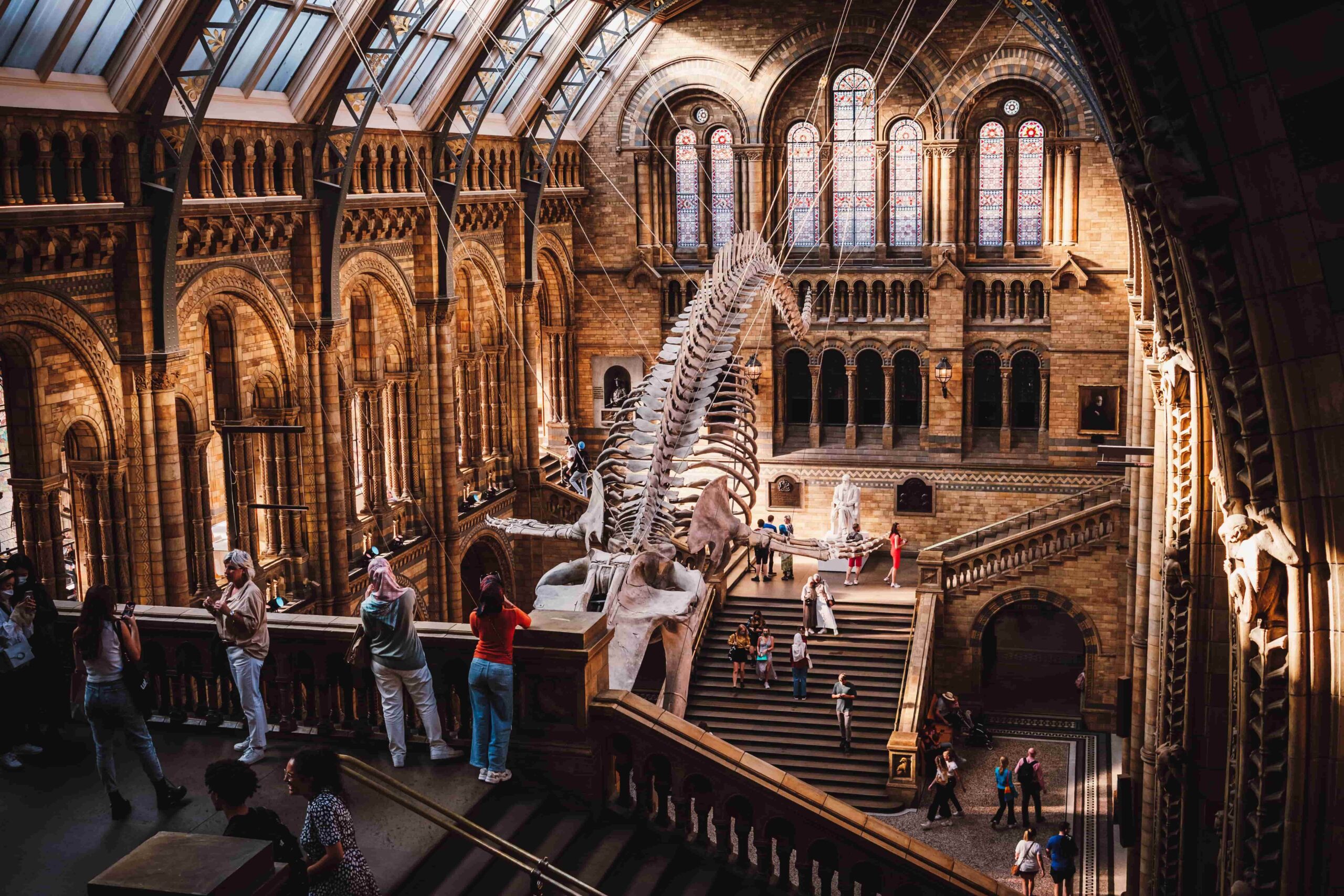
Natural History Museum
The Natural History Museum is one of three major museums in London. The Science Museum and Victoria and Albert Museum are the other two main institutions on Exhibition Road. The museum has 80 million specimens of life and earth science in five primary collections: botany, entomology, minerals, palaeontology, and zoology. It is particularly well known for its exhibition of dinosaur skeletons and ornate architecture, sometimes referred to as a cathedral of nature.
Stonehenge
Stonehenge is a prehistoric monument located two miles west of Amesbury on Salisbury Plain in Wiltshire, England. Archaeologists believe Stonehenge was built between 3000 and 2000 BC. It is composed of an outer ring of standing stones, each around 13 feet high, seven feet wide, and weighing approximately 25 tons. Inside are free-standing trilithons and two larger vertical Sarsens connected by a single lintel. The entire monument is oriented toward the sunlight on the summer solstice, and is a British cultural symbol and one of the most recognized landmarks in the United Kingdom.
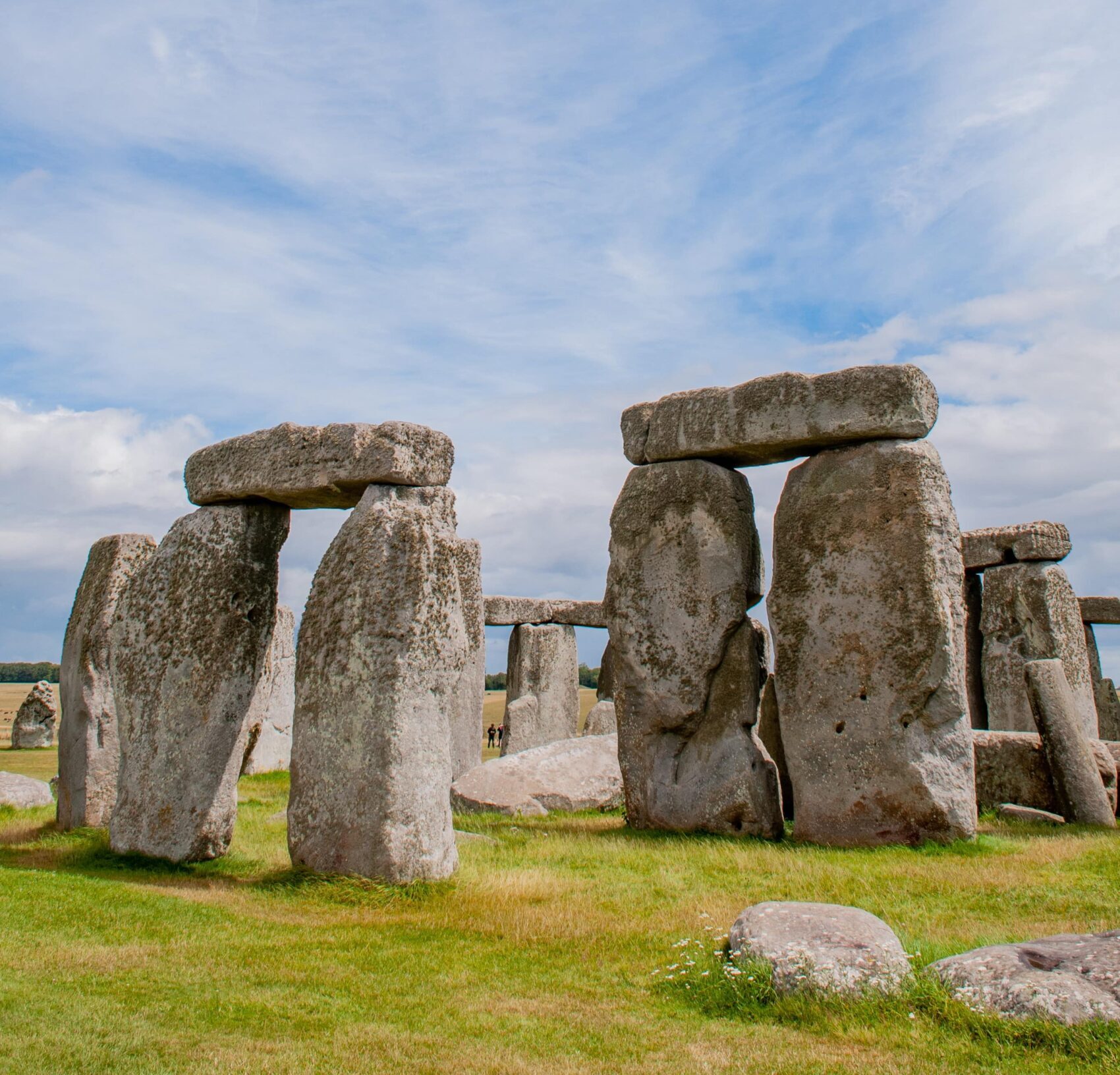

Big Ben
The official name of the tower in which Big Ben, the big bell, is placed, and was originally Clock Tower. Augustus Pugin designed the neo-Gothic tower. When it was finished in 1859, its clock was the biggest and most accurate four-faced striking and chiming clock in the world. The tower is 316 feet tall, and the ascent from ground level to the belfry is 334 steps. It has a square foundation that measures 40 feet on each side. The clock dials are 22.5 feet in diameter. The UK’s four nations are represented on the tower by shields with a rose for England, a thistle for Scotland, a shamrock for Northern Ireland, and a leek for Wales. Celebrations for the tower’s 150th anniversary were conducted on May 31, 2009. Big Ben is the tower’s biggest bell, weighing 13.5 long tons. For 23 years, it was the biggest bell in the United Kingdom.
7-day Itinerary in England
Days 1 and 2
Arrive in London!
Welcome to London!
England’s and the United Kingdom’s capital is a vibrant and lively city. You have several transportation alternatives, however, we do not recommend a private rental or driver because it is slower than any other mode of transportation. However, it is the most pleasant form of transportation.
Begin your London exploration on your first day after dropping off your baggage. One of the nicest things about this city is that it is highly walkable, and there is always an underground or a bus to take if you get tired. You may stroll through practically all of its attractions, including Hyde Park, Tower Bridge, Millenium Bridge, Sky Garden, Big Ben, Buckingham Palace, and Oxford Street.
Unless you are committed and use public transportation at every stop, you may not be able to see everything in one day. Yet, you can pick up where you left off on your second day easily. Visit Leadenhall Market for some wonderful cheese plates. For lunch or dinner, Camden Town, with its alternative vibe, is usually buzzing with famed markets and thrift opportunities, live music venues, a variety of foreign restaurants, and street entertainers. Alternatively, you can head to China Town, next to Oxford Street or opt for more upscale restaurants in London, such as Scott’s Restaurant, Chiltern Firehouse, or Isabel.



- Backpacker:
- Budget:
- Mid-range:
- Luxury:
When it becomes dark, a foreign city may be twice as dangerous - especially if you don't understand the language and are unfamiliar with the area. There is reason reason to be alarmed about walking alone in the country, however, there is enough crime recorded in London to warrant some worry. You can walk safely at day, but avoid walking at night and be alert in crowded areas or unlit alleys or streets. You can always take taxis, if you don't feel comfortable, or buses, and metros. Be wary of petty crime by taking precautions mentioned in the safety section above.
From Airport to City Center
There are multiple options you can take from the airport to the center including a well connected metro system (underground), taxis, private shuttles, or renting a car.
Day 3
A Step Back in Ancient History
Today you go west from London to see Stonehenge, one of Britain’s most iconic ancient structures. This is a popular London day excursion. The sheer mystery of how these big stones were set some 4,000 years ago will not disappoint.
Continue on to the historic town of Bath from Stonehenge. This Roman favorite contains, as you might expect, various baths to visit where you can observe how the Romans kept themselves clean and test some of the waters for yourself. It’s also worth seeing the Georgian architecture, which includes the Royal Crescent and the Circus.
When you’re finished, either stay in Baths or in Cotswolds, a laid back countryside beauty.

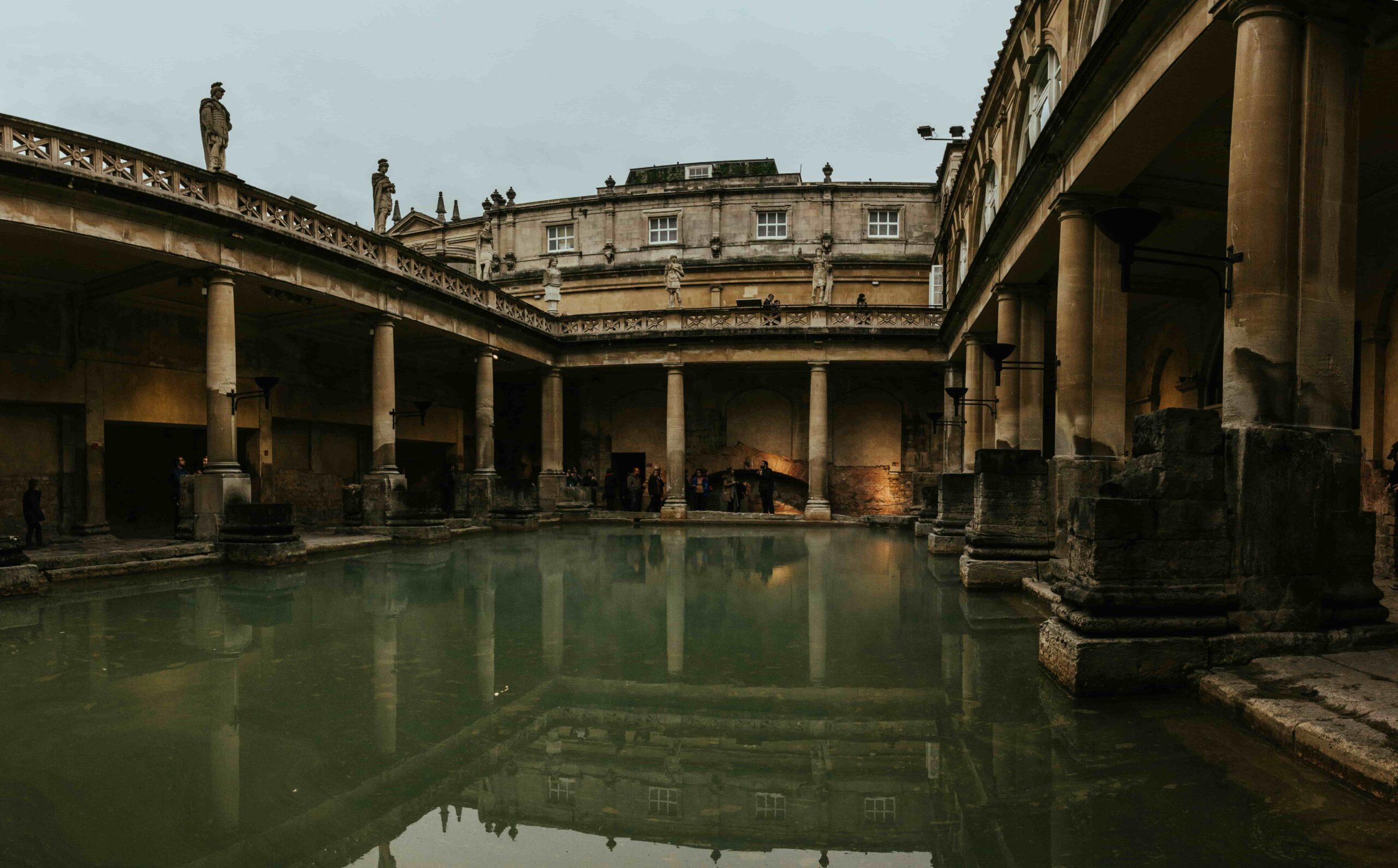
- Backpacker:
- Budget:
- Mid-range:
- Luxury:
When it becomes dark, a foreign city may be twice as dangerous - especially if you don't understand the language and are unfamiliar with the area. There is little reason to be alarmed about walking alone in Cotswolds, as their isn't enough crime recorded in Cotswolds to warrant worry. You can walk safely at day, but be alert walking at night, especially in unlit alleys or streets. You can always take taxis, if you don't feel comfortable, or buses. Be wary of petty crime by taking precautions mentioned in the safety section above.
Days 4 and 5
Northern Adventures
After a relaxing night in the Cotswolds or Bath, go north to Yorkshire. If you have your own wheels, you can visit Baddesley Clinton to see how the elite lived throughout the Middle Ages. After your tour of the castle, visit the Lord Leycester Hospital and St. Mary’s Church in Warwick. The Church is one of the largest in the UK, and the hospital was never a hospital but housed veterans. On your route, stop in Stratford-upon-Avon, Shakespeare’s birthplace. If you don’t have a car, you can still make this journey using the efficient train network. Finish your day in the Peak District, where you will spend the night.
The next morning, wake up and go to Chatsworth House, the UK’s favorite country house, which is still home to the Duke and Duchess of Devonshire and has a lot of open public spaces to see. Fountains Abbey, a UNESCO site in Studley Royal Park, is up next, 2 hours away. Enjoy the well-preserved ruins of the massive 12th-century Cistercian abbey, as well as the stunning 18th-century water garden, often regarded as the most significant in the UK, till sunset, if possible, and stay the night at one of the nearby accommodations, like Baytree Farm.



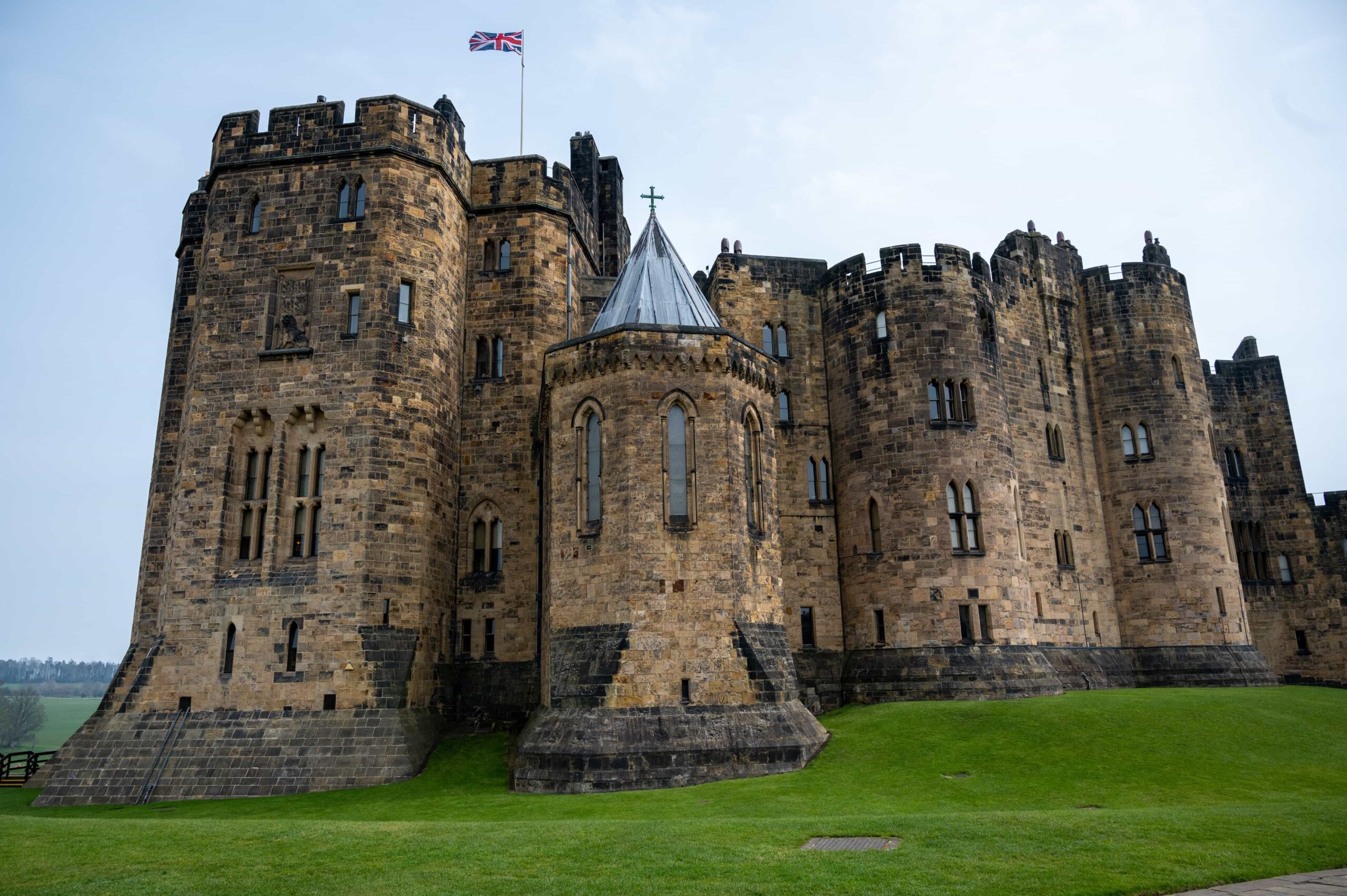

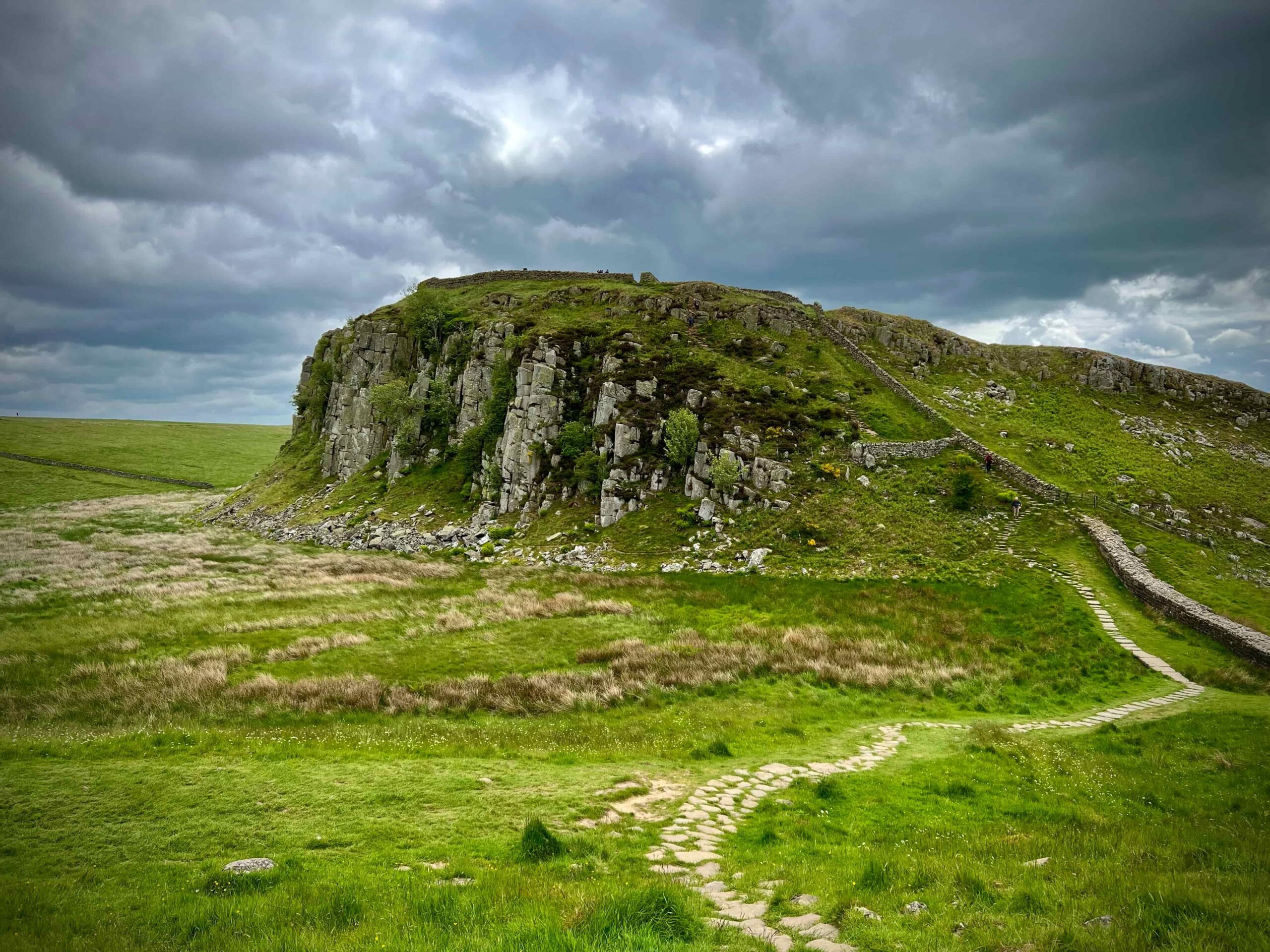
Day 6
Head North
After breakfast, you’ll depart for Northumberland, which is home to New Castle, the island straddling Hadrian’s Wall, and some of England’s greatest medieval castles.
While there, you may visit Alnwick Castle, a historic fortification where certain Harry Potter sequences were filmed. Its allure is based on its beautiful gardens and amazing architecture. You may also visit Bamburgh Castle, which is perched on a rocky hill and is surrounded by a golden sand beach. It is also the site of Viking attacks, with the current fortress erected by the Normans after the old one was destroyed by the assaults. Tours to Dunstanburgh Castle and/or Holy Island are also available.
If none of these options appeal to you, perhaps other Roman historical sites will. If that’s the case, make your way to Hadrian’s Wall. This 73-mile-wide wall extended from one side of England to the other, marking the northern border of the Roman empire. A nice site to observe the ruins is Sycamore Gap, near Housesteads Crag, where a lonely tree lies among the remnants of the highest portion of the wall. Travel south from Hadrian’s Wall to Manchester.

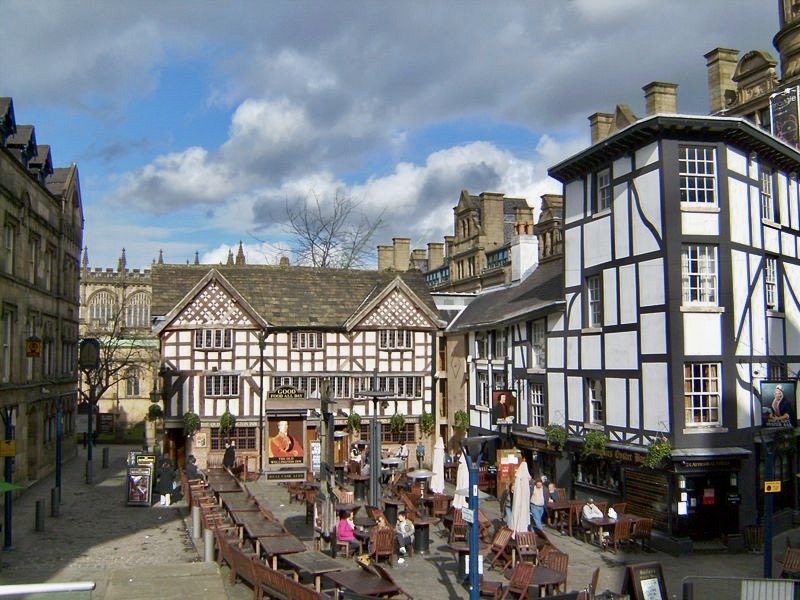
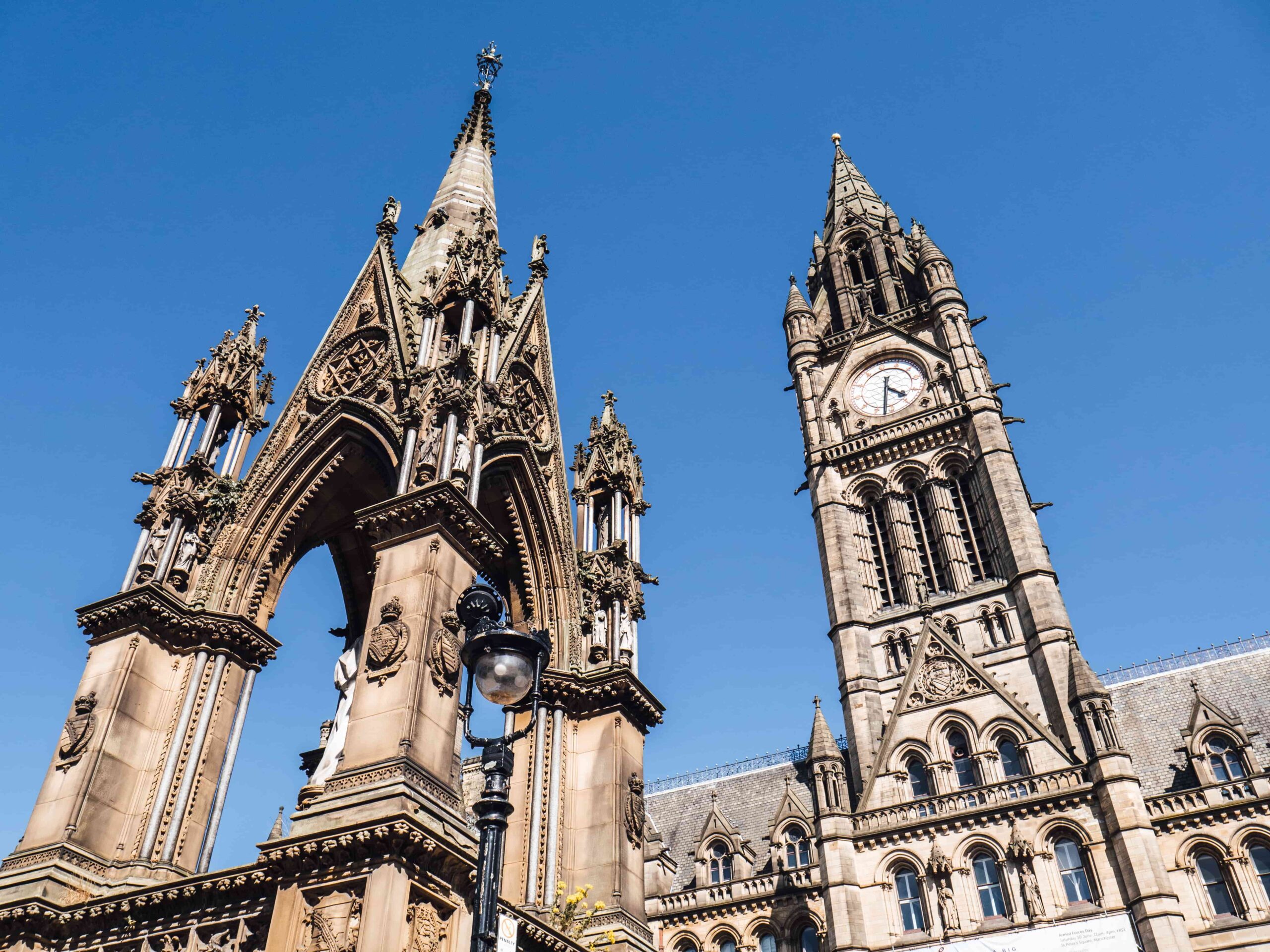
Day 7
Head to Manchester
Start the day with breakfast in the city center if you arrived the day before, or make your way to one of the football stadiums, such as Old Trafford or Etihad Stadium, but make a reservation in advance. If you are not a soccer fan, you will begin your day visiting the Imperial War Museum, which is located on the same side of the river as the Old Trafford stadium. Next, cross the Millennium Bridge to the Quays, where you may have lunch at one of the many wonderful restaurants. When you’re finished, return to the city center. You might wish to visit Manchester Central Library and other historical sites such as St Peter’s Square, John Ryland’s Library, Albert Square, and City Hall.
Depending on your interests, you can then visit the Science and Industry Museum, People’s History Museum, or National Football Museum. Next, visit Manchester Cathedral and the scenic Shambles Square, which has many restaurants and shops and is a good place to stop for a bite to eat. Go shopping in Affleck’s indoor market. Then to Piccadilly Gardens’ fountains, which provide a bustling atmosphere. Finally, before heading to Liverpool for an overnight stay, stop in Chinatown for dinner.
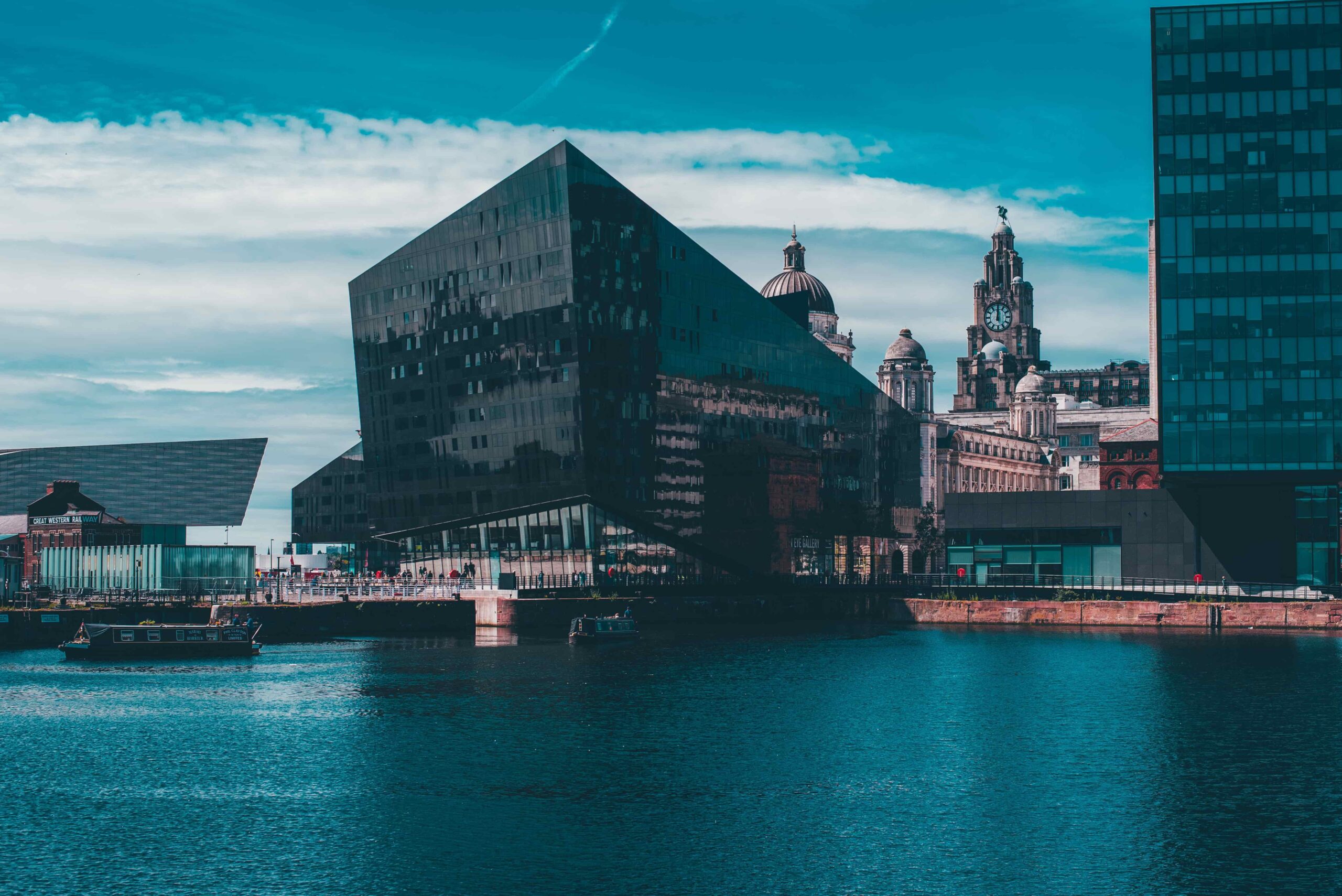
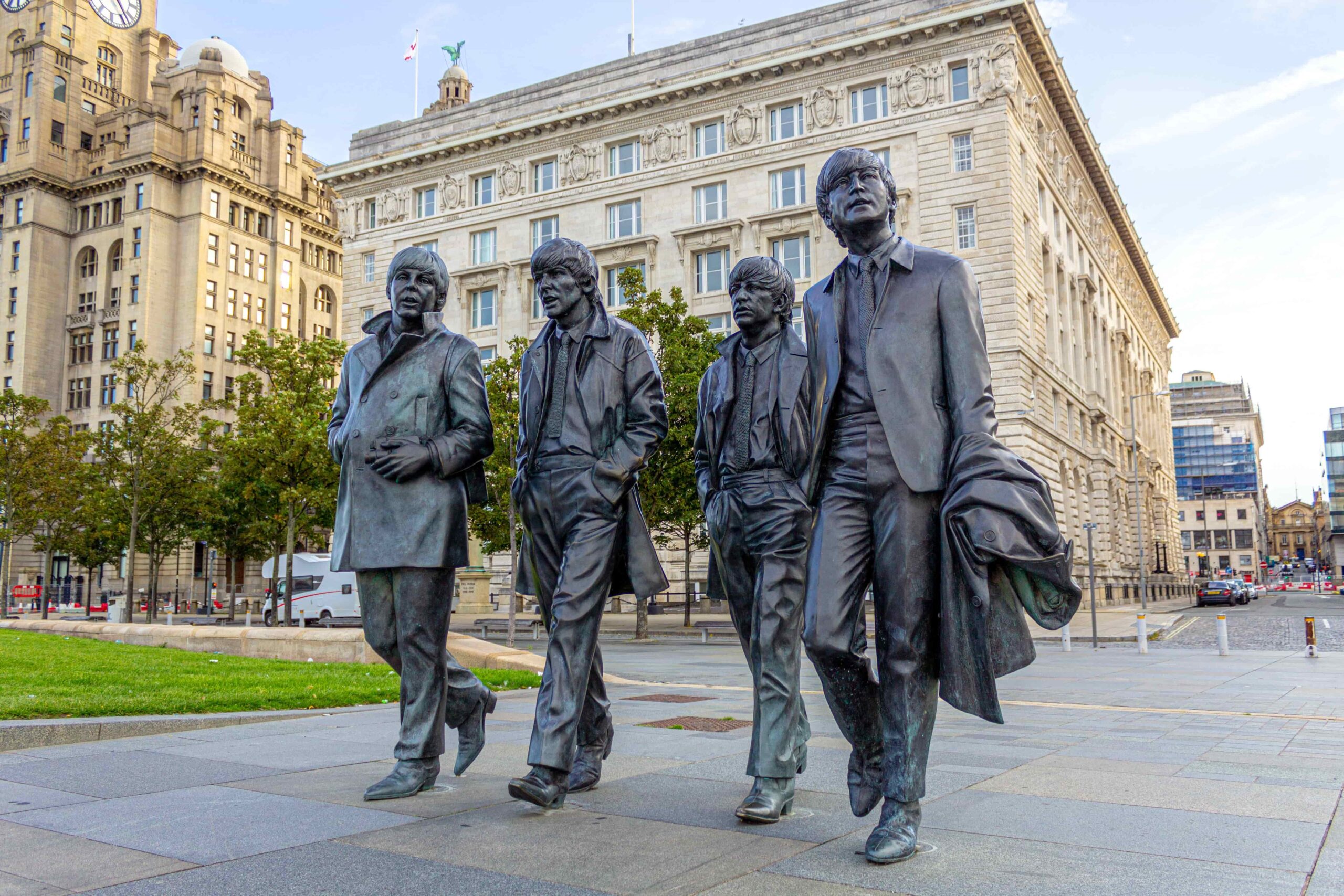

Day 8
Last day in Liverpool
If you stayed in Liverpool overnight, start your day with a full breakfast and then enjoy a 10 minute commuter or 50 minute cruise on the Mersey. Then go to the Royal Albert Dock, which was once a ground-breaking piece of architecture when it was erected in 1846. Sit on one of the outdoor benches and watch the boats go past. While at the dock, you may also visit the Merseyside Maritime Museum, which has displays about the Titanic. The Beatles Story, not far from the pier, is one of Liverpool’s attractions, having a statue of its members outside the building facing the river. For a bite to eat, visit the Baltic Triangle, a hippy and foodie haven. Street food kiosks with booths selling Korean dumplings, gourmet steaks, and Neapolitan pizza are set up under dangling fairy lights. After that, proceed to Liverpool Cathedral, the UK’s greatest religious structure, and receive goosebumps from the country’s largest pipe organ and bells. The cathedral’s towers provide stunning views of the city.
After dusk, you might like to visit any of the outstanding restaurants on Bold Street, which has views of the Church of St Luke. Alternatively, proceed to the Georgian Quarter and make your way inside the opulent Philharmonic Dining Rooms, which have copper paneling and mosaic flooring.
The Most Popular Food in England
England, Scotland, and Wales comprise the United Kingdom of Great Britain. Each country has a distinct culture and set of customs. Their culinary traditions are revealed by their diversified culture. Britain has played an important role in preserving its culture and cuisine. Romans who imported cherries, cabbages, and peas in addition to staples like maize. Wine was also imported by the Romans. The cuisines of Europe, influenced by France and Germany. Other countries like India, and other regions of the world have also had a strong effect on the United Kingdom.

Fish and Chips
This cuisine is a must-try while visiting the UK; no matter where you go, you can get a great platter of fish and chips. If you are learning English at our Eastbourne school, make sure you get some and take them to the beach since the ideal location to enjoy fish and chips is outside, by the sea (but watch out for the birds).

Full English Breakfast
Breakfast is said to be the most essential meal of the day, which is why if you are doing something physically or cognitively taxing, such as taking the IELTs test, you should have a full English breakfast! Bacon, sausages, eggs, baked beans, bread, mushrooms, tomatoes, hash browns, and black puddings are typical breakfast items.

Sunday Roast
The British adore Sunday roast meals. This meal consists of the following components: roasted meat (beef, chicken, lamb, or hog), roast potato, Yorkshire pudding, stuffing, vegetables (typically a variety of roast parsnips, Brussels sprouts, peas, carrots, beans, broccoli, and cauliflower, though not always all), and gravy.

Toad in the Hole
This substantial dish, which features sausages in Yorkshire pudding batter and is commonly served with sauce and veggies, is another simple recipe you can cook at home. Yes, as you may have guessed, British folks like Yorkshire puddings.

Shepherd’s or Cottage Pie
The main difference between these Shepherd’s Pie and Cottage Pie is the type of meat used; in shepherd’s pie, lamb is used, whilst in cottage pie, beef is used. To add to your confusion, neither of these foods are pies in the traditional sense with pastry. Shepherd’s pie and cottage pie are made with mince (lamb or beef), vegetables (carrots, tomatoes, and onions), and potatoes on top of a meaty pie filling.
What's the Travel Budget for England?
Flights
- Flights start at roughly $170 from nearby countries. Tickets however on average cost around $550 and can cost way more depending on which class and from which country you depart from.
Accommodation
- Nomad Backpacking style travelers can expect to spend around $220 for a week
- Budget travelers can expect to spend around $360 for a week
- Mid-range travelers can expect to spend around $470 for a week
- Luxury travelers can expect to spend around $850 for a week
Food Budget (Three meals and drinks)
- Nomad Backpacking style travelers can expect to spend around $14 per person per day
- Budget travelers can expect to pay around $24 per person per day
- Mid-range travelers on average would cost $30 to $45 per person per day
- Luxury travelers can expect to pay around $50 to $75 per person per day
Overall Budget Styles (Not including Flights, Tours, Transportation, or Car Rental)
- Nomad Backpacking style travelers can expect to spend roughly $350 for a week
- Budget travelers can expect to spend close to $560 for one person for a week
- Mid-range travelers can expect to spend approximately $850 for one person for a week
- Luxury travelers can expect to spend around $1,400 for one person for a week
Flights
- Flights start at roughly $170 from nearby countries. Tickets however on average cost around $550 and can cost way more depending on which class and from which country you depart from.
Accommodation
- Nomad Backpacking style travelers can expect to spend around $220 for a week
- Budget travelers can expect to spend around $360 for a week
- Mid-range travelers can expect to spend around $470 for a week
- Luxury travelers can expect to spend around $850 for a week
Food Budget (Three meals and drinks)
- Nomad Backpacking style travelers can expect to spend around $14 per person per day
- Budget travelers can expect to pay around $24 per person per day
- Mid-range travelers on average would cost $30 to $45 per person per day
- Luxury travelers can expect to pay around $50 to $75 per person per day
Overall Budget Styles (Not including Flights, Tours, Transportation, or Car Rental)
- Nomad Backpacking style travelers can expect to spend roughly $350 for a week
- Budget travelers can expect to spend close to $560 for one person for a week
- Mid-range travelers can expect to spend approximately $850 for one person for a week
- Luxury travelers can expect to spend around $1,400 for one person for a week
Flights
- Flights start at roughly $170 from nearby countries. Tickets however on average cost around $550 and can cost way more depending on which class and from which country you depart from.
Accommodation
- Nomad Backpacking style travelers can expect to spend around $220 for a week
- Budget travelers can expect to spend around $360 for a week
- Mid-range travelers can expect to spend around $470 for a week
- Luxury travelers can expect to spend around $850 for a week
Food Budget (Three meals and drinks)
- Nomad Backpacking style travelers can expect to spend around $14 per person per day
- Budget travelers can expect to pay around $24 per person per day
- Mid-range travelers on average would cost $30 to $45 per person per day
- Luxury travelers can expect to pay around $50 to $75 per person per day
Overall Budget Styles (Not including Flights, Tours, Transportation, or Car Rental)
- Nomad Backpacking style travelers can expect to spend roughly $350 for a week
- Budget travelers can expect to spend close to $560 for one person for a week
- Mid-range travelers can expect to spend approximately $850 for one person for a week
- Luxury travelers can expect to spend around $1,400 for one person for a week
Flights
- Flights start at roughly $170 from nearby countries. Tickets however on average cost around $550 and can cost way more depending on which class and from which country you depart from.
Accommodation
- Nomad Backpacking style travelers can expect to spend around $220 for a week
- Budget travelers can expect to spend around $360 for a week
- Mid-range travelers can expect to spend around $470 for a week
- Luxury travelers can expect to spend around $850 for a week
Food Budget (Three meals and drinks)
- Nomad Backpacking style travelers can expect to spend around $14 per person per day
- Budget travelers can expect to pay around $24 per person per day
- Mid-range travelers on average would cost $30 to $45 per person per day
- Luxury travelers can expect to pay around $50 to $75 per person per day
Overall Budget Styles (Not including Flights, Tours, Transportation, or Car Rental)
- Nomad Backpacking style travelers can expect to spend roughly $350 for a week
- Budget travelers can expect to spend close to $560 for one person for a week
- Mid-range travelers can expect to spend approximately $850 for one person for a week
- Luxury travelers can expect to spend around $1,400 for one person for a week
If you want to know what to pack, read this list below:
- This is a casual tropical country with warm weather that tends to get moderate rain, dress accordingly
- Raincoat or Light Waterproof Jacket
- Hiking Boots or Sturdy Sneakers (Shoes You Don’t Mind Getting Wet)
- Sunscreen
- Insect Protection – Repellent and Clothing
- Sunglasses and Sun Hat
- Water Shoes
- Beach Towels/Sarong
- Dry Bag
- Money Belt or Cross Bag
- Portable Medical Kit
- Flashlight or Headlamp
- Copies of your passport.
- Get all the needed vaccinations before traveling
- A power bank is a must in any travel.
- Always have some cash with you just in case there are no ATMs and if you are dealing with a business that solely accepts cash
- Get yourself an adapter for your gadgets
- 1 toothbrush
- 1 tube of toothpaste
- 1 razor
- 1 package of dental floss
- 1 small bottle of shampoo
- 1 small bottle of shower gel
- 1 towel
- Deodorant
- Band-Aids
- Hydrocortisone cream
- Antibacterial cream
- Earplugs
- Tylenol
- Hand sanitizer (germs = sick = bad holiday)
- A key or combination lock
- Zip-lock bags
- Plastic bags (great for laundry)
- Universal charger/adaptor
- LifeStraw (A water bottle with a purifier)
- 1 dry shampoo spray & talc powder
- 1 hairbrush
- Makeup you use
- Hairbands & hair clips
- Feminine hygiene products
Clothing For Boys
- 1 pair of jeans or khaki pants
- 1 pair of shorts
- 1 bathing suit
- 5 T-shirts
- 1 long-sleeved T-shirt
- 1 pair of flip-flops
- 1 pair of sneakers
- 6 pairs of socks
- 5 pairs of boxer shorts
Clothing For Girls
- 1 swimsuit
- 1 sarong
- 1 pair of stretchy jeans
- 1 pair of leggings
- 2-3 long-sleeve tops
- 2-3 T-shirts
- 3-4 spaghetti tops
- 1 light cardigan
Want to plan your own trip, here are some of the best resources that can help you
- Skyscanner – They search small websites and budget airlines that larger search sites tend to miss. They are hands down the number one place to start.
- Momondo – This is another favorite flight search engine because they search such a wide variety of sites and airlines. Always check here too.
- Booking.com – The best all-around booking site that constantly provides the most affordable and lowest rates. They have the widest selection of budget accommodation.
- Couchsurfing – This website allows you to stay on people’s couches or spare rooms for free. It’s a great way to save money while meeting locals who can tell you the ins and outs of their city. The site also lists events you can attend to meet people (even if you’re not staying with someone).
- Intrepid Travel – If you want to do group tours, go with Intrepid. They offer good small group tours that use local operators and leave a small environmental footprint.
- Grassroots Volunteering – For volunteering, Grassroots Volunteering compiles a list of good local volunteer organizations that keep the money within the community.
- Get Your Guide – Get Your Guide is a huge online marketplace for tours and excursions. They have tons of tour options available in cities all around the world, including everything from cooking classes, walking tours, street art lessons, and more! It has the world’s largest collection of things to do with more than 30,000 activities in 7500 destinations.
- SafetyWing – Safety Wing offers convenient and affordable plans tailored to digital nomads and long-term travelers. They have cheap monthly plans, great customer service, and an easy-to-use claims process that makes it perfect for those on the road.
- Trip Advisor: Check the reviews and then book your accommodation. TripAdvisor is where you go when you want to compare prices with multiple accommodation providers.
- VRBO: is the main search engine to use when you are looking for a home or apartment rental. It can sometimes be cheaper than hotels and it is the best way to stay in areas that offer a more local feel.
- Hostelworld: With one of the largest databases of hostels in the world, Hostelworld is the go-to site when you are looking for budget accommodation.
- Rome 2 Rio: If you want to see how to get somewhere by plane, train, bus, ferry, or car Rome2Rio lays it all out for you as well as related costs.
- World Nomads Insurance: When traveling you should always have travel insurance. We have found the best bang for your buck is by far World Nomads.
Final Thoughts on England
With its diverse buildings and heritage, breathtaking and unique landmarks, unbelievable warmness, exciting tunes and festivities, and vivid picture-perfect surroundings of forests, pristine beaches great for surfing, but also for relaxing, and wildlife sighting, England has a refined and rich heritage that can be seen across the country dating back to at least the 4000 BC as suggested by recorded history. A fantastic option for anyone seeking one of the best European holiday destinations. England is breathtakingly beautiful, with magnificent national treasures, flora, diverse wildlife, and spectacular scenery for travelers to enjoy. Would you visit England?
Have you ever been to England? Please share your thoughts and experiences in the comments area below.